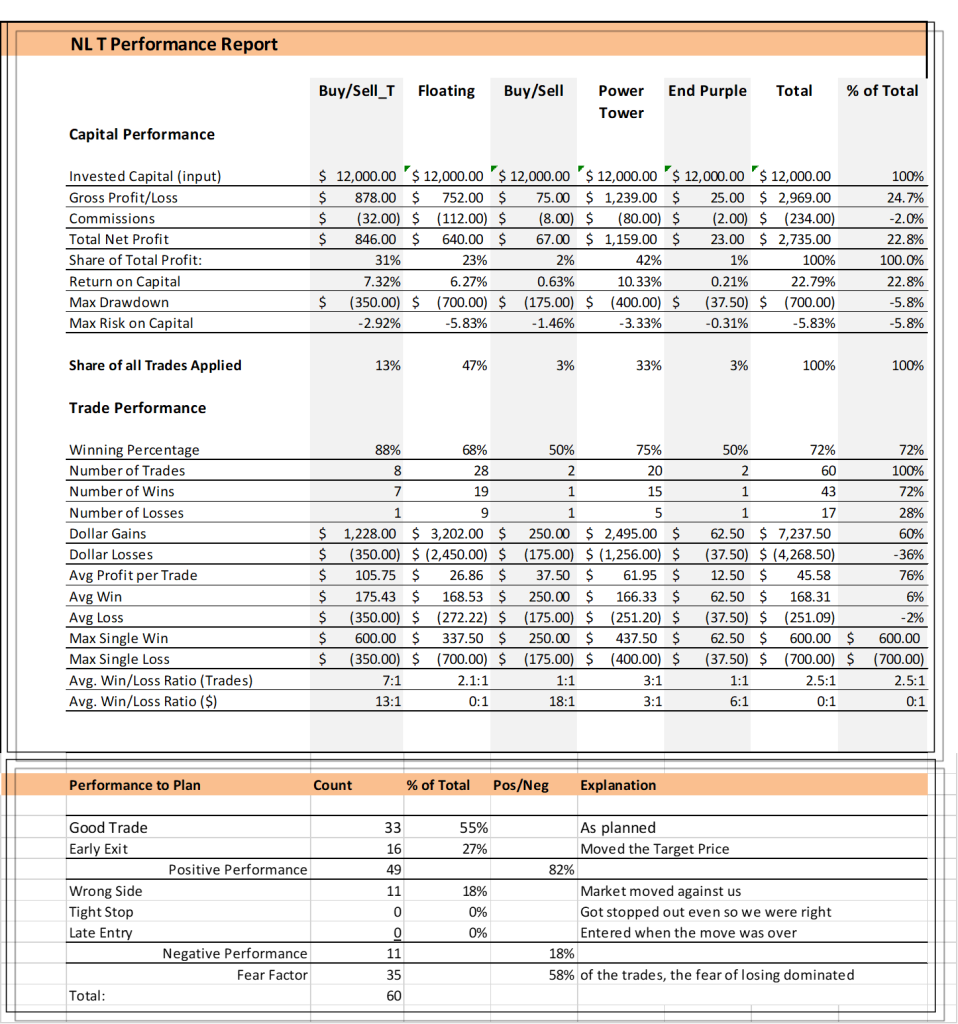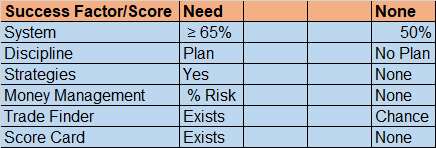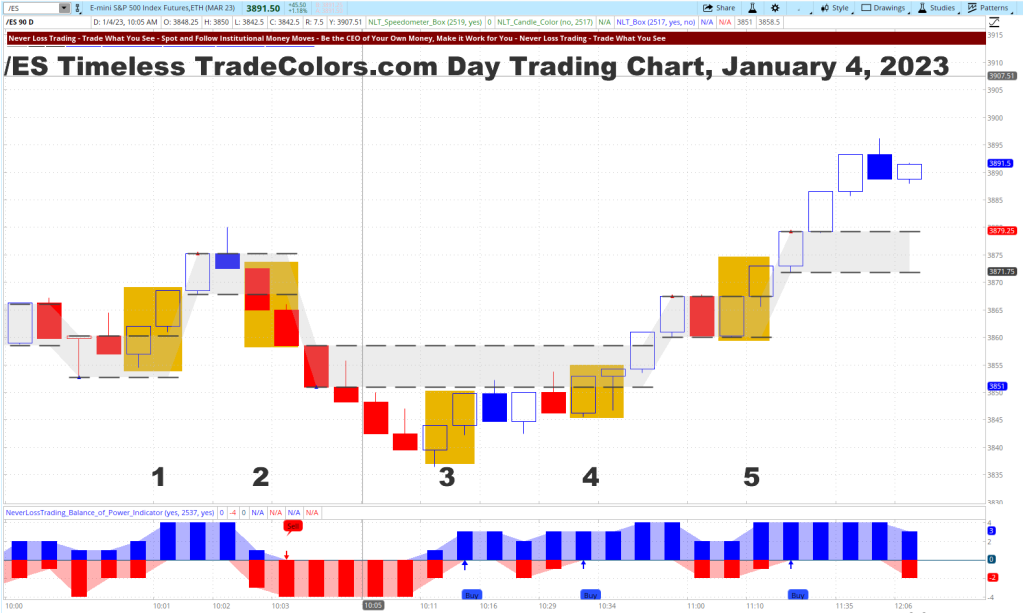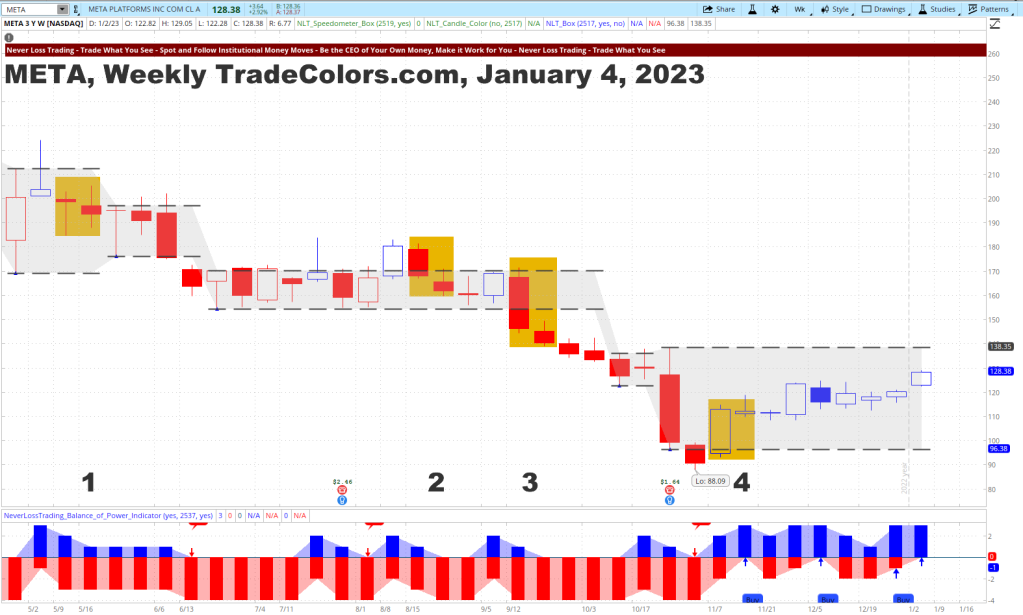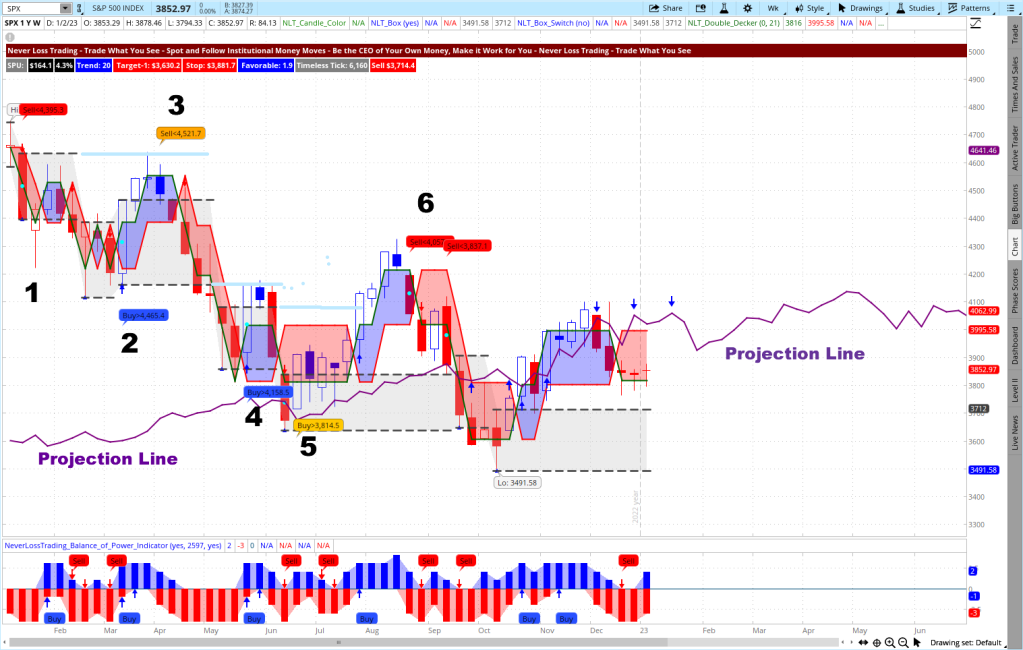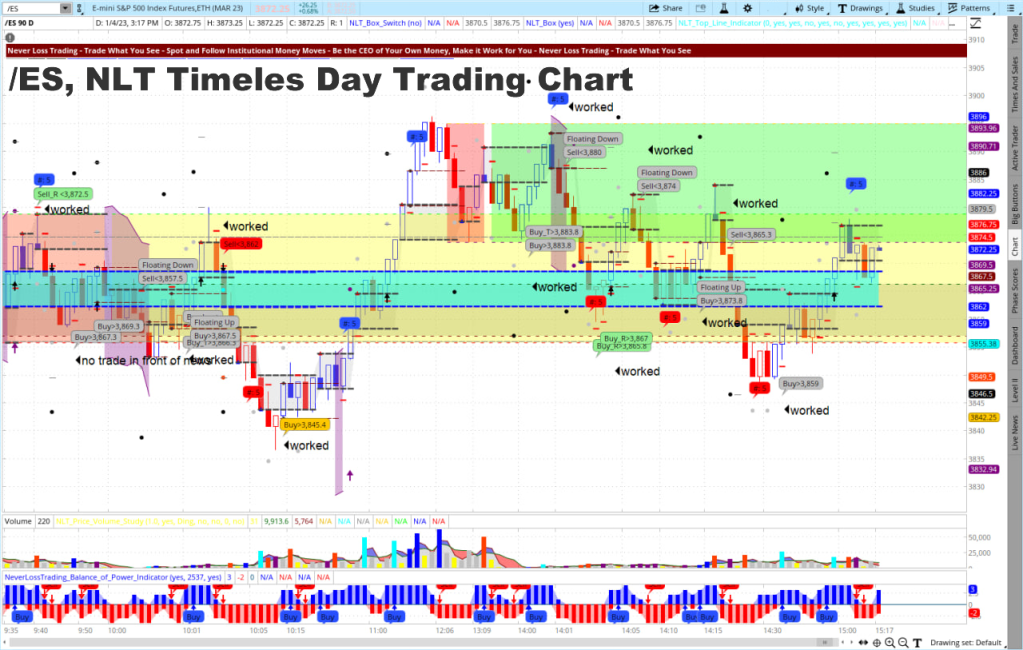Success is the state or condition of meeting a defined range of expectations. Hence, we encourage traders and investors to specify an achievable goal and guide you with our tools and knowledge of how to get there.

We use the words trader and investor synonymously:
- Traders hold positions for a shorter period, like day trading or swing trading
- Investors for a more extended period, like days and months
When setting a goal, it needs to be attainable and measurable. Fund managers, for example, measure their achievements against an index and report how well they did in their periodic reports to the fund holders. An example could be, comparing the fund development to the S&P 500. However, market conditions have changed: We have been in a bear market for the past year and making money with buy and hold is not a successful strategy; hence, if you do not change your approach to the market, you compare yourself to a falling index while our goal for you is to achieve constant income from the market and set a goal of like: 2% or 5% return on cash per month, regardless of the direction the market takes. How would such a goal sound to you?
At this point, you need to change your way to market to aim for a 2% return on capital regardless of the market’s direction: it requires you to act with strategies that fit your account that accumulate income when the markets go up or down. What you need is:
- A system that tells you crucial price turning points with specified entries, exits and stops as the maximum holding time for an open position
- Strategies to participate in directional trades to the up and downside that limit your risk
- Specify times when it is not wise to be invested by the market resting in a period of indecision (purple zone)
Let us pick a stock market chart and discuss:
Swing Trading Example QQQ

The QQQ chart shows a swing trading example, and you see multiple directional indications with buy and sell thresholds: Buy > or Sell <, and we only act if the set number is reached in the price movement of the next candle. The holding time is a couple of days. Dots specify trade targets, and red crossbars are the stop levels.
If you want to hold open positions for multiple weeks, the SPX provides a solid basis for longer-term positions. Again, you will find buy and sell indications with thresholds; horizontal lines build express supply lines on pullbacks, where we propose to exit in the current overall bear market.
Longer-Term Trading Example SPX
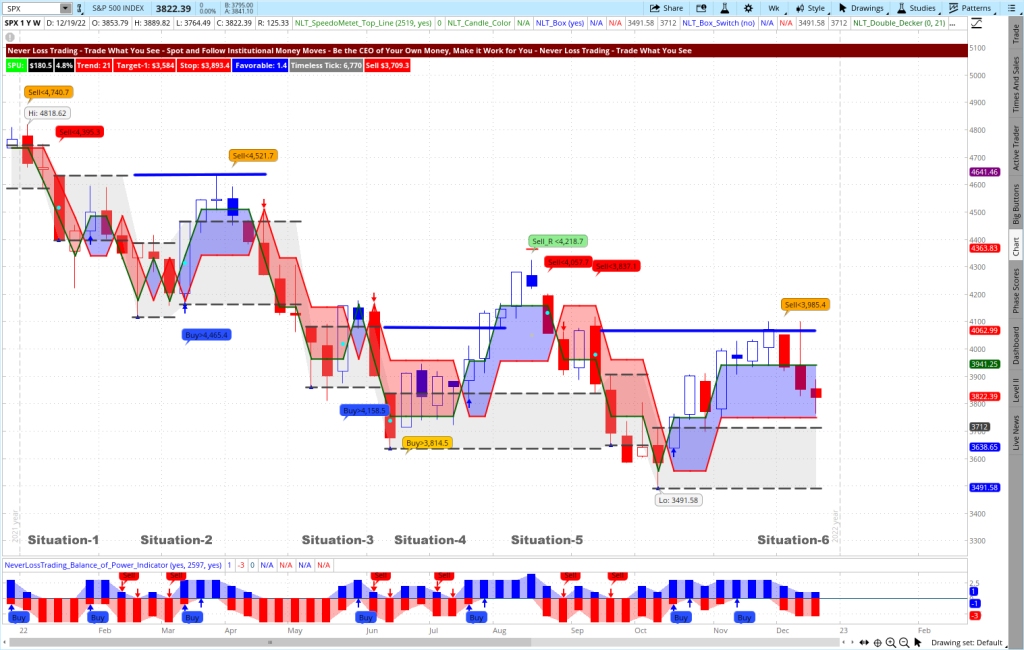
The SPX chart shows six trade situations where five worked according to plan and one failed.
Depending on the account type you are holding, a change in strategy is required to participate in downside moves:
- IRAs do not allow for short-selling stock, and we help you with the NLT Delta Force Concept to participate in falling prices by options trading strategies, allowed in this account type
- If you are operating from a margin account, you have fewer limitations, but you must hold more than $25,000 to short stocks. Again, we provide options trading strategies that limit your risk and leverage your reward per trade.
You now see how goal setting influences your way to market and requires you to change because needs constantly change, and you do not want to be left behind. So at this point, our support kicks in, and we provide the required tools and knowledge.
Also, in day trading, we recommend formulating a goal and measuring success in getting there. Hence, we recommend that our traders work towards short-term budgets. For example, as a day trader, to produce an income of $1,000 by trading one contract of either the E-Mini S&P 500 Futures Contract or Crude Oil Futures – two highly liquid assets with no limitations for following the up or downside direction. Then, when the weekly budget is hit, you stop trading. In addition, we encourage you to limit the maximum number of daily trades to three – following our concept that less trading is more: – = +. Finally, you restart the clock every week and journal your achievements to discuss what went right or wrong to improve your actions after every set of twenty trades. Depending on your broker’s margin requirement, you can participate in this exercise with a capital between $500 and $12,000.
Day trading success has a structure or pattern to follow, and I want to show you some tools that can help you form sound decisions at high probable price turning points. We pick two examples to demonstrate what our systems can do and discuss the individual trade setups. Again, the systems will formulate buy or sell thresholds (buy < or sell >). Target (dot on the chart) and stop (red crossbar) are system set, allowing you to operate with buy-stop and sell-stop bracket orders. For days trading, we choose a timeless chart setup, where candles form purely price based, and the system sets the price increment to trade. With modern AI technology and highly probable algorithmic trading systems, your market outlook and action will change, helping you to form sound mechanical decisions and act repetitively. With what we show you, three to four weekly winning trades make the $1,000 budget. We then encourage you to stop trading: overtrading is one of the strongest pitfalls of a day trader: reach the budget and be good, and trust our advice: less trading is more: – = +.
We share two examples showing NLT Timeless Day Trading Charts for the E-Mini S&P 500 and the Crude Oil Futures contract. On an NLT Timeless chart, candles are formed purely price-based, and the system defines the price increment to trade for. In our examples, we evaluate each signal as it appears valid while following the concept of less is more; you will learn during our trading sessions selection criteria to distinguish higher from lower probability setups.
E-Mini S&P 500 Index Futures Example
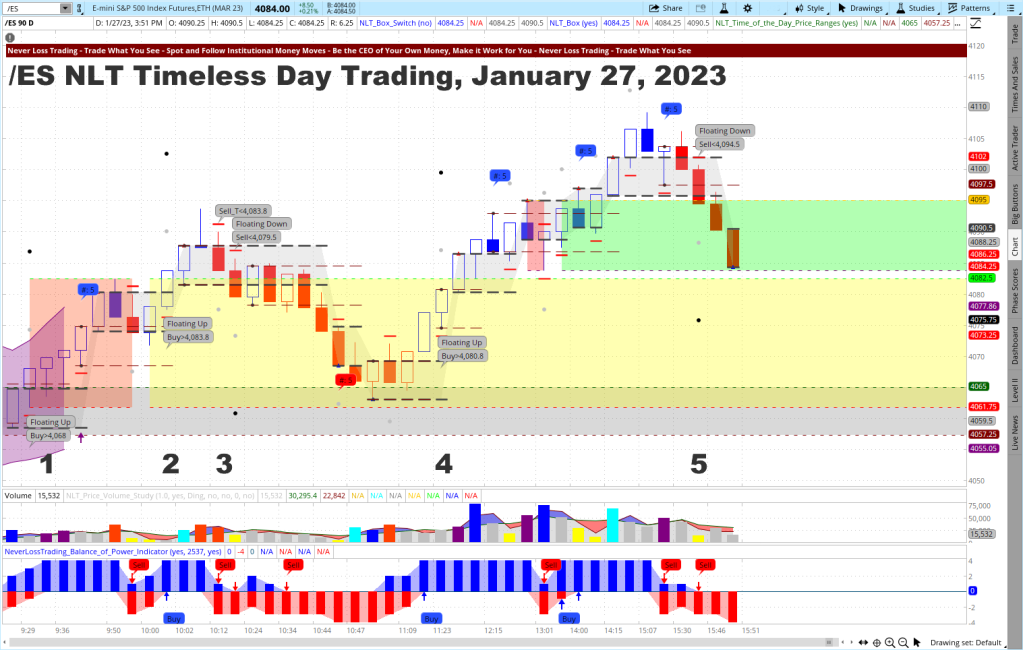
The chart shows five potential trade situations; each spells out a price threshold like Buy > $4068 and provides a basis to trade for a price change of about $300 of the underlying contract. To execute a transaction, we operate with a buy-stop bracket order, and the trade only goes to the exchange when in the price development of the next candle, the set threshold is reached and the order executed. In the example from yesterday, from the perspective of writing and publishing this article, five trade situations were highlighted, and all came to their desired target (gray dot on the chart). Non got stopped (red crossbar on the chart).
Crude Oil Futures Example
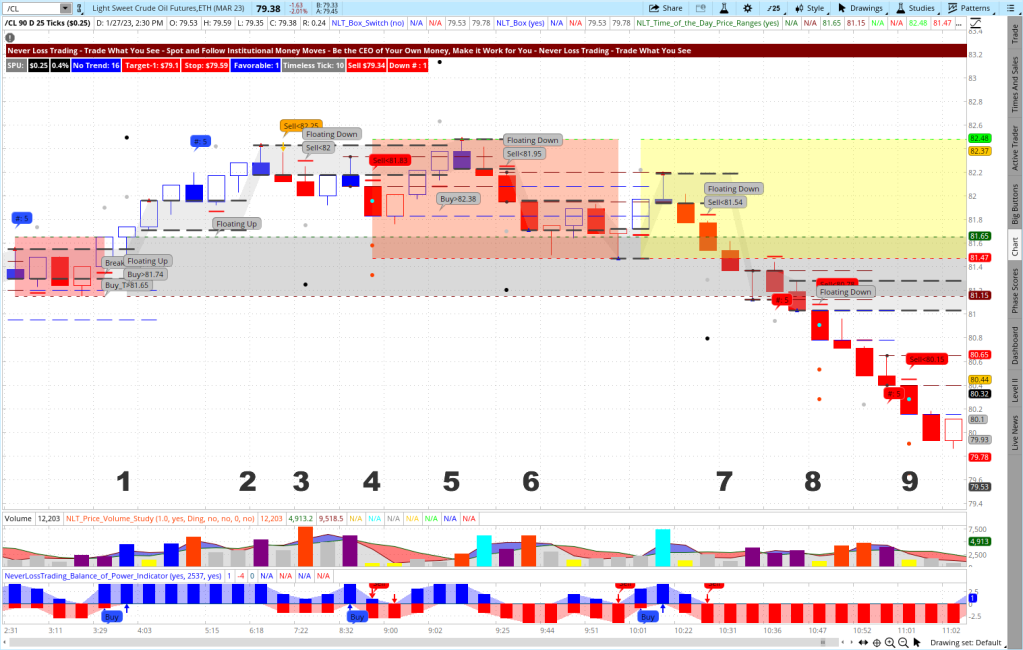
The Crude Oil Futures Chart shows nine trade situations with the same conditions and price thresholds. Accepting trades mechanically, without the evaluation to learn: six trade setups came to target (1, 2, 3, 5, 6, 7, 8, 9), and two got stopped (4, 5).
The name NeverLossTrading derives from the concept of repairing trades: never stop loss trading was a bit lengthy. In no way do we want to promise never to lose a trade, but we propagate high-probability trading for retail traders and guide you with our tools and knowledge on your pass of trading success.
In the past, algorithmic trading was solely available to institutional investors, but we put in the work and effort to offer adequate systems to retail traders at affordable rates. Our offering for NLT systems ranges from about $2,500 for TradeColors.com to $15,500 for the combination of NLT Top-Line and Trend Catching, and we work one-on-one with you to apply our systems for your decision-making best.
With NeverLossTrading, all financial markets can be traded, while we mainly focus on liquid markets in the arena of stocks, options, futures, and FOREX. We offer a robust framework of constantly adjusting to actual algorithms that contain an AI component and, with that, recalibrate constantly. Our systems provide broad flexibility because they allow us to scale up and react quickly in different products and markets. The most practical approach for us is to use algorithms to process data and then leave it to humans to make the decisions. Price, volume, and volatility are our data inputs to mathematical models. In addition, we teach various strategies to act on price changes, limiting the risk and leveraging profit opportunities.
The advantage of NeverLossTrading is that it allows for the optimal use of available data and reduces or eliminates the emotional decision-making that can occur during trading.
Our algorithms collect underlying changes in supply and demand to extrapolate potential price moves with system-defined entry, exit and stop decisions.
Trading is learnable: we take a holistic approach considering all crucial elements needed to succeed: It takes multiple dimensions to turn yourself into the trader or investor you want to be, and we support you in acquiring the knowledge and skills needed.
Success Factors for Trading and Investing

NeverLossTrading stands for high-probability algorithmic trading, where you stay in command of pushing the trade opening button: target and exit are systems defined, and you will only act in situations where risk and reward are in a meaningful balance. We are happy to share our experiences and help you build your trading business. Trading is not a typical career, and you best learn from those who are long-term in this business to cope with the rollercoaster of the financial markets. We are here to help and provide feedback on what you might be doing right or wrong.
Strive for improved trading results, and we will find out which of our systems suits you best.
contact@NeverLossTrading.com Subj.: Demo
The markets changed, and if you do not change your trading strategies with them, it can be a very costly undertaking.
We are looking forward to hearing back from you,
Thomas Barmann (inventor and founder of NeverLossTrading)
Disclaimer, Terms and Conditions, Privacy | Customer Support









